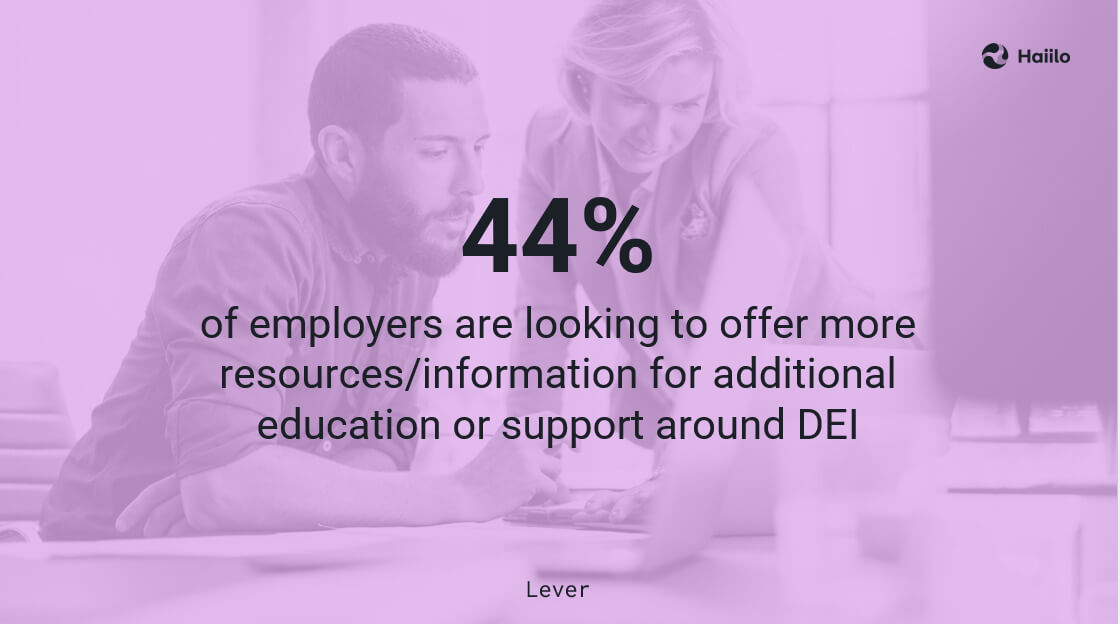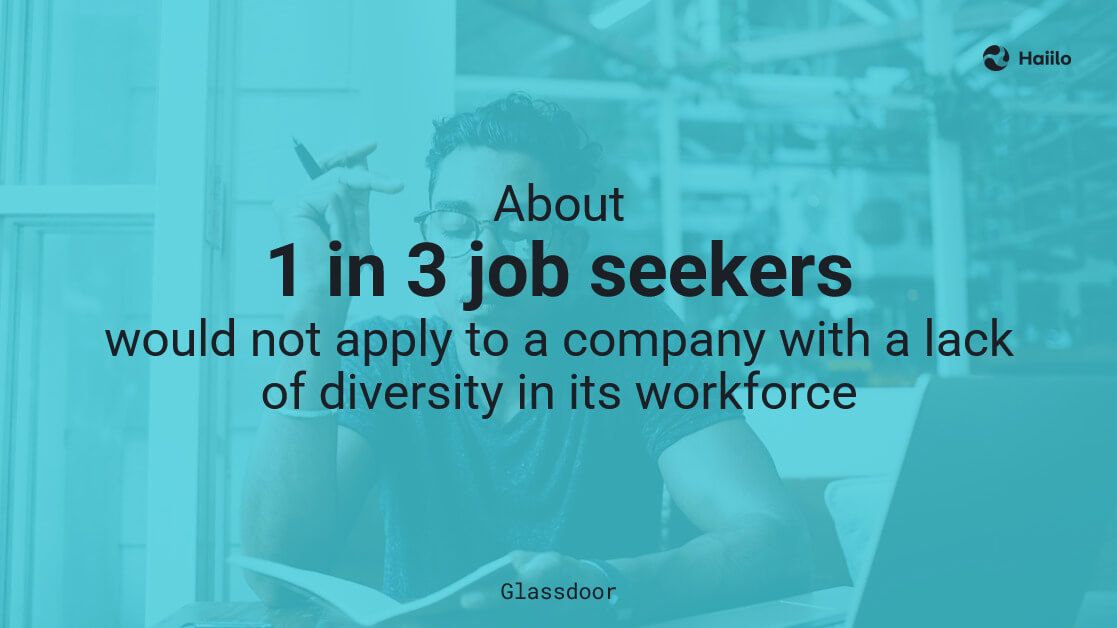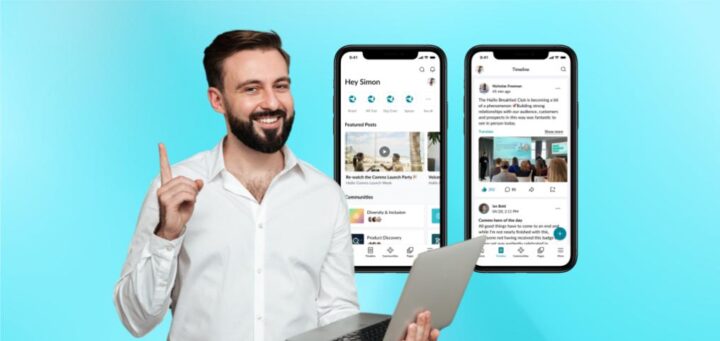Engaging different stakeholders in your DEI initiatives is critical for making your workplace more diverse, fair, and inclusive. To achieve such engagement, you must build and manage a successful DEI communications strategy.
In this blog, we will go over seven critical steps for creating a DEI comms strategy that drives better organizational alignment and exploits all the benefits of diversity and inclusion in the workplace.
- 1. Define Goals and Key Objectives
- 2. Make a Distinction Between Internal and External DEI Communications
- 3. Make Your Comms Language Inclusive
- 4. Don’t Hold Back on Transparency
- 5. Build Your DEI Comms Calendar
- 6. Promote Your Internal and External DEI Initiatives
- 7. Get Commitment From Leadership
- 8. Ask Employees for Help
- 9. Include DEI Comms In Your Recruitment and Onboarding Initiatives
- 10. Invest In the Right Communications Technology
1. Define Goals and Key Objectives
The very first step in creating your DEI communications strategy is to define clear goals and objectives. The benefits of diversity and inclusion in the workplace are numerous, so it’s important that you align your goals with the current challenges your organization faces.
Some examples of goals may include:
- Reduce employee turnover from X% to X% – studies found that workplace belonging can lead to an estimated reduction of turnover risk by 50%, and a 75% decrease in employee sick days.
- Increase the number of high-quality job applicants by X% – about 1 in 3 job seekers would not apply to a company lacking diversity in its workforce.
- Increase job offer acceptance rate from X% to X% – according to research, 76% of job seekers consider workplace diversity an essential factor when considering employment opportunities.

- Improve employee engagement by X% – in general, workplace inclusion and equity have a positive impact on employee motivation and engagement.
- Increase employee productivity by X% – research shows that companies in the top quartile for gender diversity on executive teams were 25% more likely to have above-average profitability than companies in the fourth quartile.
2. Make a Distinction Between Internal and External DEI Communications
Your internal and external DEI communications strategy may vary significantly depending on your goals. In most cases, both internal and external comms are important, and they need to be aligned.
For example, if your goal is to improve your employer brand and attract more high-quality job candidates to your open positions, external DEI communication is what matters the most. The focus should be on showcasing your DEI initiatives to the external audience and reaching passive and active job seekers that care about this matter.
On the other hand, if your goal is to improve employee motivation, engagement, and productivity through diversity, equality, and inclusion, your internal comms strategy is critical. This strategy should focus on understanding what your workforce cares about and how that impacts their overall workplace experience.
Make your DEI comms strategy more successful with Haiilo
3. Make Your Comms Language Inclusive
When creating your DEI communications strategy, make sure that you set the right tone of voice and that the language is inclusive. Inclusive language is free from words, phrases, or tones that reflect prejudiced, stereotyped, or discriminatory views toward people or groups.
This step takes some practice and may only become perfect after a while. However, as your organization grows and your DEI knowledge extends, your vocabulary and word choices will mature as well. Moreover, you can transfer this knowledge to the entire workforce and encourage others to use more inclusive language in the workplace.
One common example includes using the word “guys” to address a group of people regardless of gender. However, many people may be unaware that it has discriminatory associations.
So replacing “guys” with ” everyone, ” “team”, “colleagues,” or ‘all” is considered more inclusive.
📹 Good internal marketing is critical for making your DEI initiatives more impactful. Check out our Masterclass about 5 ways to make internal marketing work.
4. Don’t Hold Back on Transparency
Many organizations today are trying to be more transparent. Transparency in the workplace builds trust, attracts new people to your organization, and makes existing employees more loyal.
Transparency about your DEI initiatives is particularly important. Even though this is not easy to practice, it shows that your organization is taking responsibility, and it demonstrates a commitment to change.
You could release a publication on equal pay or workforce demographics in your workplace. It can be your CEO’s announcement about where your company currently stands versus where it wants to be in a year from now.
Failing to disclose information or ignoring diversity, equity, and inclusion altogether will be perceived negatively by your employees.
5. Build Your DEI Comms Calendar
Building a DEI-focused organization takes time and effort. It’s not just about one or two initiatives you take in a year. Instead, DEI should be a part of your core company values and something your employees live by.
To always keep diversity, equity and inclusion on your stakeholders’ minds, plan in advance, and build a quarterly DEI communications plan and content calendar.
Some of the initiatives you may consider include:
- Internal DEI survey to assess your employees’ perceptions and their current state of mind
- External survey to understand the importance of DEI to your ideal candidate profile
- Live podcast with your CEO to talk about the importance of DEI in your organization
- External event that you can sponsor to support a certain group of people
- Employees’ stories from different ethnicities, races, and nationalities
- A company-wide event to celebrate diversity in your organization
- Internal assessment of the fairness of compensation and benefits across departments
- Internal initiative to drive more diversity, equity, and inclusion. For example, an initiative to reduce the gap between male and female leadership in your organization
- Internal employee newsletter with best DEI practices employees can practice every day
These are just a few ideas, but with a little bit of creativity, you can do many more things to make your DEI comms strategy interesting and engaging for everyone.
6. Promote Your Internal and External DEI Initiatives
44% of employers are looking to offer more resources/information for additional education or support around DEI, and 51% already share their DEI efforts in company-wide channels.
On the other hand, many organizations that heavily invest in various DEI initiatives are struggling to spread the word about them.

Once your DEI calendar is ready, think about various internal and external channels to distribute the content.
Internally, many HR and internal communications professionals struggle to reach every employee with the right message at the right time. This is particularly true for larger organizations with complex company structures that use many different communication channels.
To eliminate this communication barrier, IC professionals should easily distribute the DEI content via different communication channels, including email, instant messaging platforms, intranets, and other channels.
Externally, it is easier to reach a wider audience and gain trust with the help of your own employees. More on this topic later in the blog.
7. Get Commitment From Leadership
If your leadership is not committed to the DEI culture you want to drive company-wide, it’s going to be hard to embed this mindset in the rest of the workforce.
Hence, make sure that your leadership team is on board with your DEI communications strategy, as this is the most effective way to make your initiatives credible, get employees to listen, and drive organizational change. Asking your leaders to act as champions or sponsors of your diversity and inclusion programs can drive employees’ engagement and help employees understand the value and benefits of DEI.
8. Ask Employees for Help
One of the best ways to showcase your company’s DEI initiatives and achieve a better reach is through employees. Without the help of your employees, it’s hard to make your external DEI comms credible and successful.
According to research, with a formal employee advocacy program, you can expand your organic reach by 200%, among many other benefits. The good thing about employee advocacy is that half of all employees share content from or about their employer on social media, and 33% of all employees do so without any prompting.
Meaning, it shouldn’t take too much effort to start seeing the benefits of advocacy immediately.
What’s important is that you make it easy for your employees. They should have all your external DEI content available in one place and be able to share that content with their social media networks in minutes.
9. Include DEI Comms In Your Recruitment and Onboarding Initiatives
When employees act as advocates of your DEI programs, they naturally boost your company’s employer brand and the ability to attract and hire the best talent to your organization.
As mentioned previously, 76% of job seekers consider workplace diversity an important factor when considering employment opportunities, and about 1 in 3 job seekers would not apply to a company with a lack of diversity in its workforce.

So your diversity and inclusion communications strategy should always be included in your recruitment efforts. Besides encouraging your employees to act as ambassadors, you can also talk about DEI culture on your career site and job descriptions.
Furthermore, you should start encouraging the DEI mindset early in your employees’ journeys inside your organization. Make sure that your onboarding process and materials include information and best practices about your DEI-focused culture.
10. Invest In the Right Communications Technology
Forward-looking internal communications professionals understand the power of technology in making their work more impactful.
Modern employee communications platforms can go a long way in making your DEI communications more streamlined and efficient, aligned with your company’s goals, more engaging to employees, and measurable.
Regarding internal communications campaigns, large enterprises usually struggle with making content more engaging and targeted to employees’ interests, locations, job functions, and other criteria. With the right tool that offers powerful segmentation and targeting capabilities, comms professionals can make DEI content more engaging and significantly improve readership.
Next, communicators should always be able to distribute relevant DEI content via various internal communication channels such as email, Slack, MS Teams, and any other channel your company may be using.
Given the amount of workload IC professionals deal with, they can also leverage the power of AI. Writing content from scratch is very time-consuming, but with the help of AI, communicators don’t ever have to create content from scratch anymore.
Last but not least, your internal communications platform should be easy to implement and scale. Done are days when organizations lose months to implement new workplace solutions or need a team of IT experts for successful implementation. Instead, modern cloud-based solutions are designed to get you started immediately and scale as your company grows.










